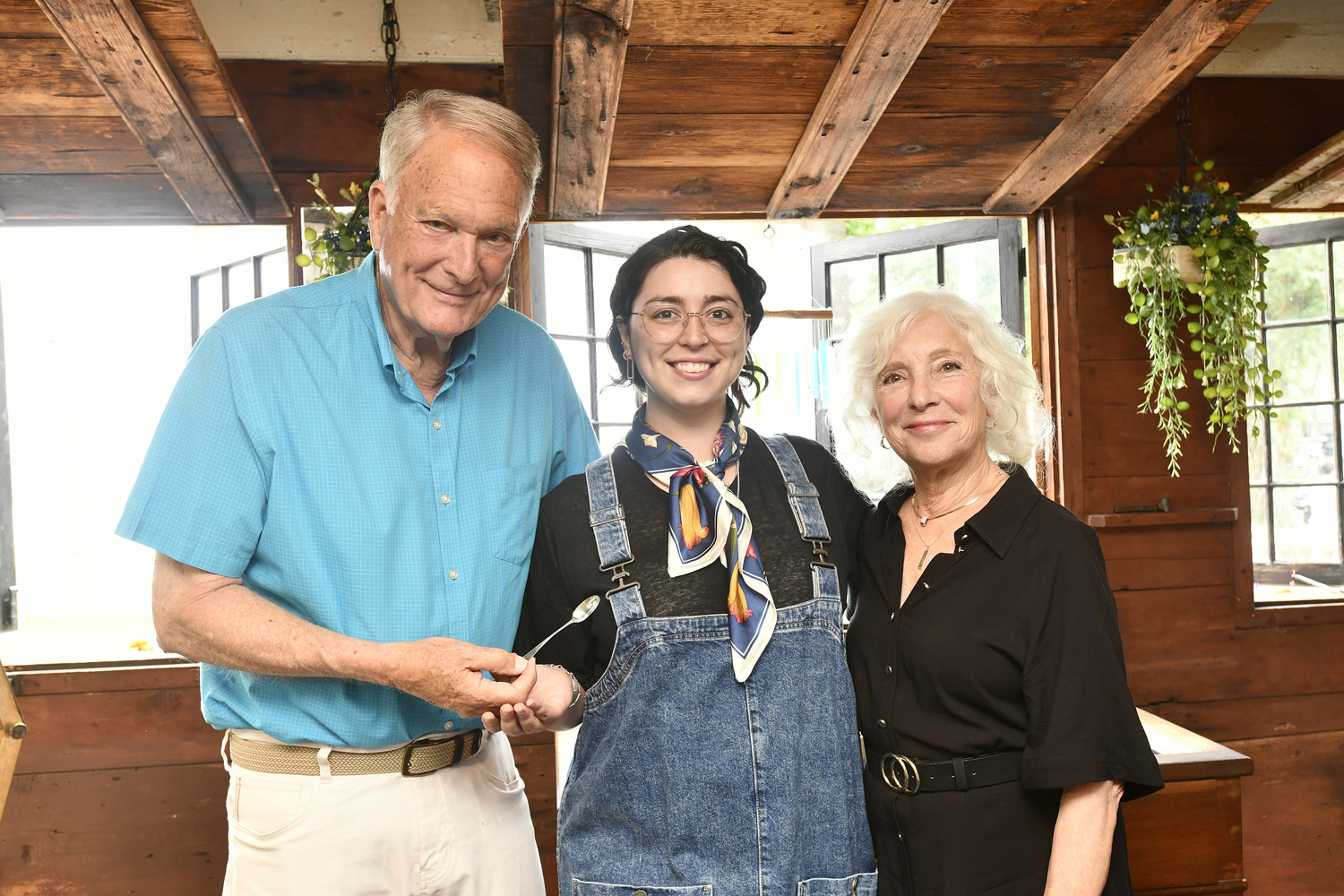
When it comes to Long Island history, Noel Gish certainly qualifies as an expert.
The North Fork resident enjoyed a long career as a history teacher in the Hauppauge school district, authored books about Long Island’s past, and served for many years on the board of the Suffolk County Historical Society.
His passion for local history has extended beyond the classroom and boardroom. About three decades ago, while browsing an estate sale, Gish noticed a pile of old silver cutlery. Two spoons caught his attention — they bore a small, simple inscription on the back of the handle: the letters “EP.”
That detail may have gone unnoticed by others, but Gish immediately recognized the initials as belonging to Elias Pelletreau, the famed Southampton Village silversmith who operated a silver shop on Main Street — one that remains open to this day.
Gish likens Pelletreau, who died in 1810, to the Paul Revere of Long Island for his role as a colonial patriot who supported the break from England at the start of the American Revolutionary War.
Pelletreau’s craftsmanship is just as significant. His silverwork can be found in the Museum of Fine Arts in Boston, the Metropolitan Museum of Art, the Yale University Art Gallery, the Suffolk County Historical Museum in Riverhead, the Smithtown Historical Society, the Southampton History Museum collection, and numerous private collections. Among his notable clients: William Floyd, a signer of the Declaration of Independence representing Suffolk County and New York State.
“That says something about Pelletreau’s work and reputation in the 18th century,” Gish said.
During the British occupation of Long Island from 1776 to 1783, Pelletreau took his family to Connecticut, like many patriots of the time. He returned to Southampton at the end of the war, resumed his craft, and lived there until his death in 1810.
Gish held on to the spoons he’d acquired at the estate sale for years. But recently, he decided it was time to restore the smaller of the two, which he believes was likely used for salt or condiments. The spoon had been chewed on by a previous owner’s dog, leaving small tooth marks.
He wasn’t sure if the damage could be repaired, but fate intervened. The Southampton History Museum had recently reopened the Pelletreau Silver Shop and brought in a resident silversmith, Alyssa Saccente.
It was Gish’s wife, Kathryn Curran — the executive director of the Robert David Lion Gardiner Foundation — who suggested bringing the spoon to Saccente for restoration, creating what Gish called a “full-circle historical moment.”
In addition to her work as the resident silversmith, Saccente also creates and sells handmade jewelry under her Gatta Zaffira Jewelry line. She said she was honored to take on the restoration project — especially at the same location where the spoon had originally been crafted more than 250 years ago.
“Kathryn and Noel were just as happy to have the work done here as I was humbled and excited to be able to take the spoon back to its former glory,” Saccente said. “The moment had a real gravity to it that you could feel in the best way. It almost felt like the building knew one of its previous occupants was back home.”
Saccente said she used many of the same time-honored techniques employed by 18th century silversmiths like Pelletreau — alongside a few modern conveniences like power tools and electricity.
“The damage to the spoon was severe enough that it needed some real TLC, but thankfully it was nothing too catastrophic,” she said. “The dog’s teeth didn’t puncture all the way through the metal, so I had a decent place to start.”
The work required time and patience, but eventually the spoon was fully restored.
“The fact that the spoon was able to get the care and attention it did, in the place it was born, using the same techniques — it really felt like a full-circle moment,” she said.
“One of the best parts of my job is being able to facilitate happy moments like this for people as the resident artist for the Southampton History Museum. It felt like the Pelletreau silversmiths were with me on this journey, helping guide me to the finish line.
“The connection that craft makes between artists and the people we create for is something that can’t be overstated. Even though I have the honor of working in this historic building every day, restoring this spoon made me feel like I was truly stepping back through time into a workshop of the past.
“It’s so special that we have a place like the Pelletreau Silver Shop in our community — one with such deep roots in history and craftsmanship.”
Gish said Saccente’s work was a “complete success” and that he was “more than pleased” with how everything turned out. He reflected on the historical importance of the shop and its continued presence on Main Street.
“The Pelletreau shop, where Alyssa works, dates almost unchanged from 1686,” he said. “The small dwelling has been a silversmith shop, then a cobbler shop, a gift shop, a book shop in the 20th century — before returning to the silver shop of the Pelletreau era.
“This small building at 80 Main Street in Southampton is one of, if not the, oldest continually operating trade shops in America. The Pelletreau shop and its preservation are part of the great history that is Southampton and Long Island.”